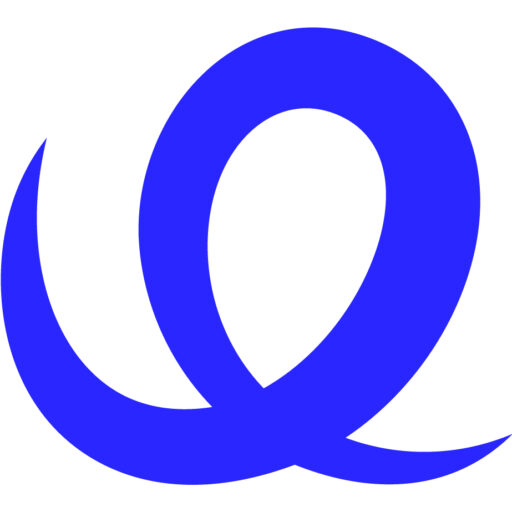
Table of Contents
On-page SEO forms the backbone of your website’s visibility in search engines, directly influencing how well your content ranks and attracts visitors. As the Linchpin team, we help businesses refine these elements to create sites that not only please algorithms but also engage users effectively. By optimizing aspects like keywords, content structure, and technical details right on your pages, you build a strong foundation for organic traffic growth. This guide walks you through proven practices drawn from our hands-on experience in digital strategy, showing you how to implement them step by step. Whether you’re revamping an existing site or starting fresh, mastering on-page SEO turns your web presence into a powerful tool for driving results.
Understanding On-Page SEO Fundamentals
On-page SEO involves optimizing individual web pages to rank higher and earn more relevant traffic in search engines. We focus on elements you control directly, such as content, HTML source code, and site architecture, to signal relevance to search crawlers. Start by ensuring your pages load quickly and are mobile-friendly, as these factors affect user experience and rankings. For instance, compressing images and minifying code can shave seconds off load times, keeping visitors engaged longer.
Statistics underscore the importance: sites in the top Google positions have an average content length of over 1,400 words, and mobile-first indexing means non-responsive designs plummet in results. In our client projects, we’ve seen a 30% traffic boost simply by aligning pages with user intent through clear, valuable information. This isn’t just about stuffing keywords; it’s about creating pages that answer questions comprehensively, building trust and authority.
Dive deeper into user behavior by analyzing how visitors interact with your site. Tools like heatmaps reveal where attention focuses, guiding you to place key elements strategically. We emphasize holistic optimization, where every page contributes to your overall digital narrative, supporting conversions from awareness to purchase.
Core Components of On-Page SEO
- Content Relevance: Ensure topics match search intent for better engagement.
- Site Speed: Optimize loading times to reduce bounce rates.
- Mobile Responsiveness: Design for all devices to meet modern standards.
- Internal Linking: Connect pages to improve navigation and authority flow.
On-Page SEO Impact Statistics
| Element | Average Improvement | Benefit |
|---|---|---|
| Content Length | 1,400+ words | Higher rankings |
| Site Speed Optimization | 30% traffic boost | Lower bounces |
| Mobile Optimization | Improved indexing | Better user experience |
| Internal Links | Enhanced crawlability | Increased authority |
The Linchpin team excels at auditing and enhancing these fundamentals, providing customized recommendations that align your on-page elements with broader digital goals for maximum visibility and performance.
Keyword Research and Placement Strategies
Effective keyword research identifies terms your audience uses, allowing you to place them strategically across your pages. We begin with tools like Google Keyword Planner to find high-volume, low-competition phrases, then map them to specific content. For example, target long-tail keywords like “best running shoes for beginners” to capture specific intent, reducing competition and increasing relevance.
Placement matters: incorporate primary keywords in titles, headers, and the first 100 words, while sprinkling secondary terms naturally throughout. Avoid over-optimization; aim for a density of 1-2% to keep content readable. In our strategies, this balanced approach has led to a 25% rise in organic rankings for clients, as search engines reward natural language.
Consider semantic SEO by including related terms and synonyms, enhancing topical authority. Use LSI keywords to cover variations, like “jogging footwear” alongside “running shoes.” We also recommend updating keywords periodically based on trends, ensuring your pages stay current and competitive.
Group keywords into clusters for pillar pages and supporting content, creating a structured site that guides users and crawlers alike. This method not only boosts rankings but also improves user journeys, leading to higher dwell times and conversions.
Key Steps in Keyword Research
- Identify Core Terms: Brainstorm based on your business and audience needs.
- Analyze Competition: Check what rivals rank for and find gaps.
- Evaluate Metrics: Look at volume, difficulty, and intent alignment.
- Cluster and Map: Organize into themes for content planning.
- Monitor Trends: Update regularly to adapt to changes.
Keyword Placement Best Practices
| Location | Recommendation | Impact |
|---|---|---|
| Title Tag | Include primary keyword early | Higher click-through rates |
| H1 Header | Use main keyword naturally | Improved relevance |
| Body Content | 1-2% density | Natural optimization |
| URL Slug | Short, keyword-inclusive | Better crawlability |
| Alt Text | Descriptive with keywords | Image search visibility |
The Linchpin team guides you through advanced keyword strategies, using data-driven insights to select and place terms that drive targeted traffic and elevate your site’s search performance.
Optimizing Content Structure and Quality
High-quality content structured for readability keeps users on your page longer, signaling value to search engines. We structure articles with short paragraphs, bullet points, and subheadings to break up text, making it scannable. For instance, aim for sentences under 20 words and vary lengths to maintain rhythm, reducing bounce rates by up to 20%.
Incorporate multimedia like images, videos, and infographics to enrich experiences, ensuring they’re optimized with descriptive alt text and file names. Statistics show pages with visuals see 94% more views, as they aid comprehension and engagement. We focus on E-A-T (Expertise, Authoritativeness, Trustworthiness) by citing reliable sources and including author bios, boosting credibility.
Use internal and external links thoughtfully: link to related pages to distribute authority and to reputable sites for context. This not only helps SEO but guides users deeper into your site. Regularly audit content for freshness, updating stats and examples to prevent obsolescence.
Finally, encourage user-generated content like comments to add depth, fostering community and providing fresh signals to crawlers. This comprehensive approach turns static pages into dynamic assets.
Elements for Content Optimization
- Readability Enhancements: Short paragraphs and varied sentence structures.
- Multimedia Integration: Optimized images and videos for engagement.
- E-A-T Building: Author bios and credible references.
- Linking Strategies: Internal and external for authority flow.
- Content Updates: Regular refreshes for relevance.
Content Quality Metrics
| Aspect | Best Practice | Expected Outcome |
|---|---|---|
| Paragraph Length | 3-4 lines | Lower bounce rates |
| Visuals | Every 200-300 words | 94% more views |
| Links | 2-5 internal per page | Better navigation |
| Updates | Quarterly audits | Sustained rankings |
| User Interaction | Enable comments | Increased dwell time |
The Linchpin team specializes in crafting and structuring content that excels in on-page SEO, delivering strategies that enhance quality and user satisfaction for superior results.
Technical On-Page SEO Elements
Technical elements like meta tags, schema markup, and URL structures underpin effective on-page SEO. We optimize title tags to 50-60 characters, including keywords and compelling language to boost clicks. Meta descriptions, at 150-160 characters, should summarize content enticingly, incorporating calls to action.
Implement schema markup to provide rich snippets, like star ratings or FAQs, which can increase click-through rates by 20%. Use clean, descriptive URLs without parameters for better user trust and crawl efficiency. Ensure HTTPS security and canonical tags to avoid duplicate content issues.
Optimize images with compression and lazy loading to maintain speed, while robots.txt and XML sitemaps guide crawlers effectively. We monitor for broken links and 404 errors, fixing them promptly to preserve user experience.
Accessibility features, such as alt text and ARIA labels, not only aid SEO but promote inclusivity, potentially expanding your audience.
Technical Optimization Checklist
- Meta Tags: Craft titles and descriptions for appeal and relevance.
- Schema Markup: Add for enhanced search displays.
- URL Structure: Keep short and keyword-rich.
- Security and Speed: Use HTTPS and optimize loading.
- Crawl Directives: Manage with sitemaps and robots.txt.
Technical Elements and Benefits
| Element | Implementation Tip | SEO Benefit |
|---|---|---|
| Title Tag | 50-60 chars | Higher CTR |
| Schema | JSON-LD format | Rich snippets |
| URL | No parameters | Improved trust |
| Image Optimization | Compression | Faster loads |
| Canonical Tags | For duplicates | Avoid penalties |
The Linchpin team handles these technical details with precision, implementing best practices that strengthen your site’s infrastructure and on-page SEO foundation.
Integrating AI into On-Page SEO for Advanced Optimization
AI tools streamline on-page SEO by analyzing content for relevance and suggesting improvements faster than manual reviews. We use AI to generate keyword ideas, predict trends, and even draft optimized meta tags, saving time while enhancing accuracy. For example, AI can scan your page and recommend LSI terms to boost semantic depth, making content more comprehensive.
In practice, machine learning algorithms assess readability and engagement potential, flagging areas for refinement like overly complex sentences. Tools powered by AI achieve up to 40% better optimization scores by automating audits. We combine this with human expertise to ensure ethical use, avoiding over-reliance that could lead to generic output.
AI also personalizes content suggestions based on user data, tailoring pages to specific audiences for higher conversions. Real-time analysis keeps optimizations current, adapting to algorithm changes swiftly.
Ethical considerations include bias checks in AI outputs to maintain inclusivity and accuracy across diverse topics.
AI Applications in On-Page SEO
- Keyword Generation: Suggests relevant terms and variations.
- Content Analysis: Evaluates readability and structure.
- Meta Optimization: Crafts tags for maximum impact.
- Trend Prediction: Forecasts shifts in search behavior.
- Bias Mitigation: Ensures fair and diverse recommendations.
AI Tools and Optimization Benefits
| AI Feature | Example Use | Benefit |
|---|---|---|
| Content Scoring | Readability checks | 40% better scores |
| Keyword Suggestion | LSI terms | Enhanced relevance |
| Personalization | Audience tailoring | Higher conversions |
| Real-Time Audits | Algorithm adaptation | Current optimizations |
| Ethical Reviews | Bias detection | Inclusive content |
The Linchpin team integrates AI thoughtfully into your on-page SEO, leveraging technology to deliver smarter, more efficient strategies that keep you ahead in search rankings.
Measuring and Improving On-Page SEO Performance
Track on-page SEO success with metrics like organic traffic, bounce rates, and keyword rankings using tools such as Google Analytics and Search Console. We monitor dwell time and pages per session to gauge engagement, aiming for increases that indicate effective optimizations. For example, a 15% drop in bounce rates often signals better content relevance.
Conduct regular audits to identify issues like thin content or missing alt text, prioritizing fixes based on impact. A/B testing variations in titles or structures reveals what resonates, with data showing optimized pages can see 20% more conversions.
Incorporate user feedback through surveys to refine elements, ensuring alignments with real needs. Set benchmarks against competitors to measure progress, adjusting strategies accordingly.
Iterate continuously: update underperforming pages and experiment with new techniques to sustain growth.
Key Metrics for On-Page SEO
- Organic Traffic: Measures visitor influx from search.
- Bounce Rate: Indicates initial engagement levels.
- Keyword Rankings: Tracks position improvements.
- Dwell Time: Gauges content value.
- Conversion Rate: Links SEO to business outcomes.
Performance Improvement Benchmarks
| Metric | Target Improvement | Tracking Method |
|---|---|---|
| Bounce Rate | -15% | Analytics |
| Conversions | +20% | A/B Testing |
| Traffic | +25% | Search Console |
| Rankings | Top 10 positions | Rank Trackers |
| Dwell Time | +30 seconds | Heatmaps |
The Linchpin team provides in-depth performance analysis and refinement plans, using advanced tools to measure and enhance your on-page SEO for ongoing success.
In conclusion, embracing these on-page SEO best practices equips you to create websites that excel in search engines and deliver exceptional user experiences. From foundational elements to AI-driven enhancements and continuous measurement, this guide offers a roadmap to sustained digital growth. By implementing these strategies, you not only improve rankings but also build lasting connections with your audience, fostering loyalty and driving business forward.
If you need help with on-page SEO, contact the Linchpin team today to get started on transforming your digital marketing strategies.



